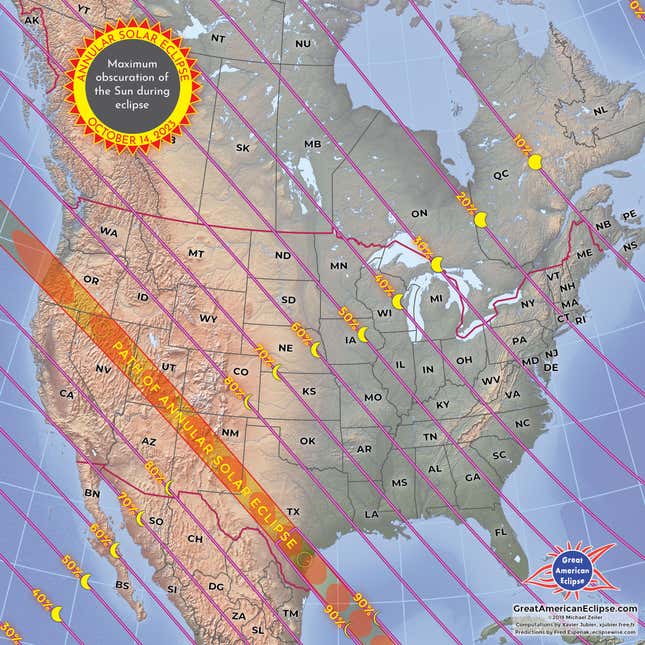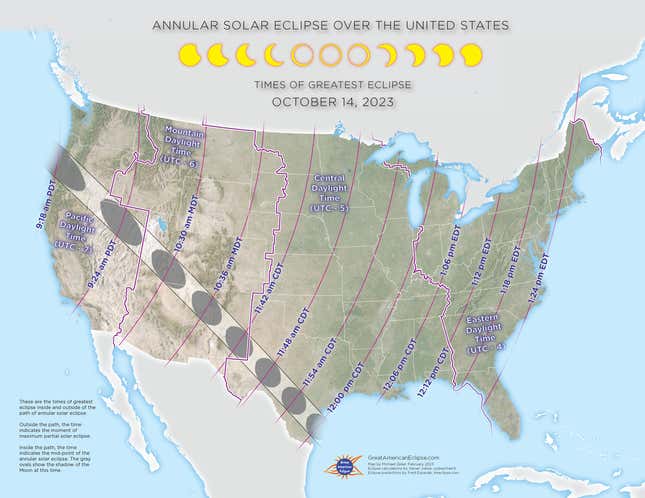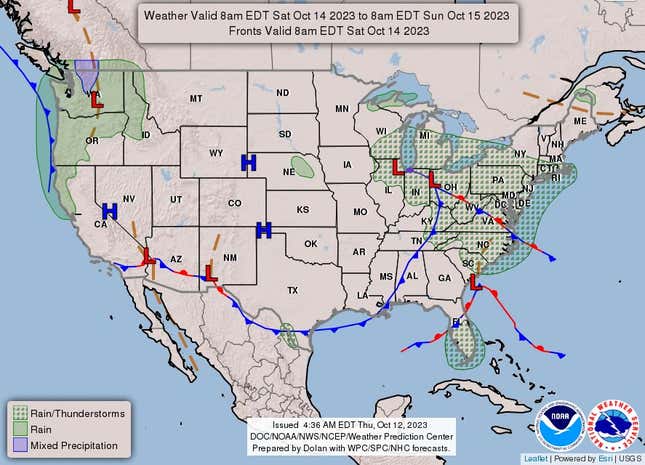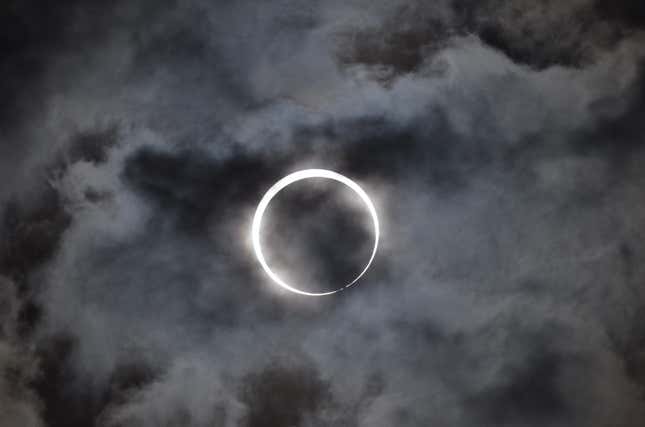On October 14, sky-watchers across North America will have the opportunity to witness a stunning annular solar eclipse, provided the weather plays along. Here’s your guide to when and where to catch this celestial event, from the vibrant “ring of fire” to varying degrees of partial obscurity.
What is an annular solar eclipse?
An annular solar eclipse is characterized by the Moon’s marginally apparent size, which prevents it from fully obscuring the Sun. Consequently, while the majority of the Sun’s disk is shaded, the outer rim remains visible, creating a characteristic “ring of fire” effect.
Related article: Your Guide to October’s Much-Anticipated ‘Ring of Fire’ Solar Eclipse
Which locations have the best views?
The path of annularity during an annular solar eclipse traces a narrow, specific route across Earth, within which observers are treated to the full view of the radiant ring of fire. This path can traverse vast distances, potentially spanning continents and oceans. Outside of this path, in peripheral areas, observers won’t see the full annular effect but will instead experience a partial eclipse, which is still pretty cool.
Advertisement

Advertisement
In the United States, the solar eclipse will first appear in Oregon at 12:13 p.m. ET and conclude in Texas at 1:03 p.m. ET. During these 50 minutes, the path of annularity will appear across eight U.S. states, namely Oregon (the first state in which the eclipse will be visible), the northeast corner of California, Nevada, Utah, lower Colorado, upper Arizona, New Mexico, and Texas. U.S. cities within the direct path include Eugene (Oregon), Albuquerque (New Mexico) and San Antonio (Texas).
Advertisement
From there, the path of annularity will move across the Gulf of Mexico and over Mexico, Guatemala, Belize, Honduras, Nicaragua, Costa Rica, Panama, Colombia, and Brazil. The Great American Eclipse offers maps and timetables for regions outside of North America.
Observers situated within the path of annularity will experience approximately one hour and 15 minutes of a partial solar eclipse on either side of the main event, while the ring of fire—the annular solar eclipse—will last for around four to five minutes (durations will be shorter on the outer boundaries of the path).
Advertisement
Will partial views of the eclipse be visible elsewhere?
The entire North American continent will enjoy views of the eclipse to varying degrees. Obviously, the farther away from the path of annularity, the less pronounced the annular “ring of fire” effect will be. Away from the annular path, observers will witness a progressively more partial eclipse, which could manifest as a subtle dimming of the daylight, depending on distance and geographical location.
Advertisement

In California, viewers can expect no less than 70% of the Sun’s surface to be obscured at the eclipse’s peak. Meanwhile, spectators in Florida will observe an obscuration upwards of 50%. In Michigan and North Carolina, the obscuration will be above 40%, while those in Ontario and New York will experience between 20% and 30% obscuration. The map above shows where and when the eclipse will occur across the United States.
Advertisement
What’s the weather outlook for Saturday?
Sadly, unfavorable weather may prohibit optimal viewing experiences in some places.
Advertisement

NOAA’s Weather Prediction Center forecasts cloud and rains for Oregon and Washington, and rain across much of southern Ontario (where I live, grrrrr) and much of the U.S. Northeast. Florida, as per usual, can also expect some rain.
Advertisement
Is it possible to view an eclipse when it’s cloudy?
Yes, it’s possible to observe an eclipse through cloud cover, but (unsurprisingly) the quality of the viewing experience can be significantly reduced depending on the thickness and type of clouds.
Advertisement

Thin, sparse clouds may permit enough sunlight to get through and expose the eclipse, albeit in a muted manner. It’s worth noting that, even under heavy cloud cover, some effects of the eclipse, such as a noticeable decrease in ambient light during the peak, might still be perceptible.
Advertisement
Can I watch the eclipse online?
For safe viewing, whether under clear or cloudy skies, using proper solar viewing glasses is critical to protect your eyes from harmful solar radiation. Always prioritize eye safety during any solar observing activity, and turn to live streams or broadcasts of the event if viewing conditions are suboptimal. NASA, for example, is providing a live stream of the event, which you can watch on YouTube or the stream provided below.
Advertisement
Buy protective solar eclipse glasses: Amazon
The Virtual Telescope Project 2.0 is also making a live stream available, with teams in Arizona, Florida, and Panama.
Advertisement
Whether you find yourself within the path of annularity, observing a partial obscuration, or joining virtually through an online stream, the eclipse unites us in a celestial spectacle. It’s also a reminder of the bigger show to come: the April 8, 2024 total solar eclipse over the U.S., Canada, and Mexico.
For more spaceflight in your life, follow us on X (formerly Twitter) and bookmark Gizmodo’s dedicated Spaceflight page.
Services Marketplace – Listings, Bookings & Reviews